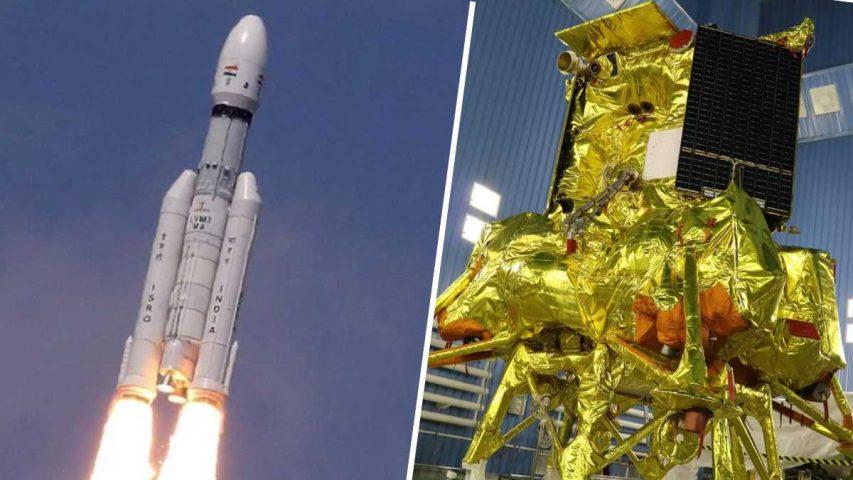Exploring the mysteries of the Moon has been a driving force in humanity’s quest for scientific understanding and discovery. In this journey of lunar exploration, two remarkable missions stand at the forefront – Lunar 25 and Chandrayaan-3. These missions, undertaken by Russia and India respectively, epitomize the relentless pursuit of knowledge beyond Earth’s boundaries.
Lunar 25: Probing the Lunar South Pole
In a significant leap for lunar exploration, the Lunar 25 mission, also designated as Luna-Glob-Lander, embarked on its journey on August 10, 2023. This pioneering Russian lunar lander endeavor is meticulously aimed at the enigmatic southern polar region of the Moon. With a focused approach, Lunar 25 is driven by two primary scientific objectives that promise to unveil crucial insights about the Moon’s composition and its polar exosphere dynamics.
Chandrayaan-3: Advancing Lunar Exploration
Chandrayaan-3 is an initiative that serves as a testament to the nation’s expertise in lunar exploration. The mission’s core objective revolves around showcasing a holistic capability for secure lunar landings and rover operations. This next step in India’s space journey encompasses a Lander and Rover configuration, meticulously crafted to navigate and investigate the lunar surface. Marking a significant milestone, Chandrayaan-3 embarked on its journey on July 14, 2023, lifting off from the Second Launch Pad at the Satish Dhawan Space Centre in Sriharikota, Andhra Pradesh.
Similar Mass, Distinct Objectives
While Lunar-25 and Chandrayaan-3 may share a comparable mass, their goals and payloads differentiate them in their quest to unravel lunar mysteries. Lunar-25 boasts a liftoff weight of approximately 3,860 lbs (1,750 kg), a considerable portion of which is propellant, essential for its landing and maneuvering on the lunar surface. In comparison, the Chandrayaan-3 Vikram lander, weighing 3,862 lbs (1,752 kg), includes the 57 lbs (26 kg) Pragyan rover as part of its ensemble.
Scientific Payloads: Unveiling Lunar Composition
Luna-25’s scientific prowess lies in its array of eight science instruments, among them the Lunar Manipulator Complex (LMK), designed for excavating lunar regolith. Additionally, the Neutron and Gamma Detector (ADRON-LR) is poised to analyze the lunar surface for the presence of water ice, a resource that holds great promise for future lunar endeavors.
Chandrayaan-3’s Vikram lander, on the other hand, is geared to maximize its operational window on the Moon’s surface. Equipped with four science payloads, one of its key objectives involves inserting a thermal probe into the lunar soil to a depth of around four inches (10 centimeters). This probe will diligently record temperature variations in the lunar regolith throughout the lunar day, shedding light on the unique thermal characteristics of the Moon.
Pragyan’s Dual Instrumentation
The Pragyan rover accompanying Chandrayaan-3 is a scientific powerhouse in its own right. Armed with the Laser-Induced Breakdown Spectroscope (LIBS) and the Alpha Particle X-ray Spectrometer (APXS), Pragyan is set to conduct detailed studies of the lunar regolith. These instruments will analyze the elemental composition of the Moon’s surface, offering valuable insights into its geological history.
Retroreflectors: Timeless Tools for Lunar Measurements
A standout feature of both missions is the incorporation of retroreflectors. On Vikram, a retroreflector serves the purpose of reflecting light back to its source. This technology, reminiscent of those placed on the Moon during the Apollo missions, serves as a high-precision tool for measuring the distance between the Earth and Moon accurately. It stands as a testament to humanity’s pursuit of scientific understanding, transcending the boundaries of time and technology.
Challenges and International Cooperation
Notably, these missions highlight the significance of international collaboration in space exploration. While global cooperation often defines such endeavors, the geopolitical landscape has occasionally influenced the trajectory of space missions. Russia’s international isolation following the events in Ukraine led to the European Space Agency’s (ESA’s) withdrawal from Luna-25, -26, and -27 missions. However, India’s Chandrayaan-3 mission continues to benefit from ESA’s “Estrack” network, demonstrating the resilience and commitment of the international space community.
Key takeaways for competitive examinations
- Russian Federal Space Agency Director: General Yury Borisov



 Indian Olympic Medal Winners List Till N...
Indian Olympic Medal Winners List Till N...
 Who is the Inventor of the Gramophone?
Who is the Inventor of the Gramophone?
 HS Dhaliwal Appointed New DGP Of Andaman...
HS Dhaliwal Appointed New DGP Of Andaman...
